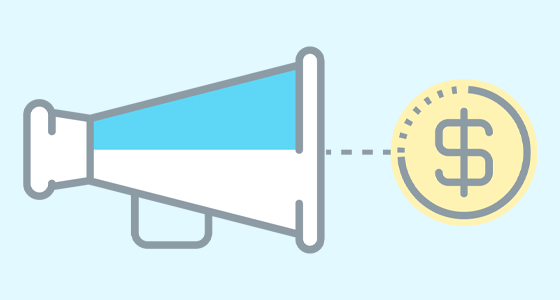
Even though 95% of new product launches ultimately fail, those that succeed have the potential to make history and reshape an entire industry. Apple did it to the tech sector in 2007 with the iPhone, Square did it to small business payments in 2010, and Amazon did it to Ecommerce with the launch of Prime in 2005. Nevertheless, because we can only view successful product launches in retrospect, it’s easy to forget that even the world’s biggest brands have had their delays, failures, and near-misses. Boost your chances of joining the legends and avoid the most common B2B product launch pitfalls with our step-by-step guide to winning the market.
1. Set Your Timeline
The market may dictate the demand for a particular product or service, but responsibility for the delivery comes down to the vendor. In B2C, you might be able to rush a product to market, but there’s too much at stake in B2B to sacrifice quality for speed. With that in mind, pick a launch date and work back from it, setting clear deadlines for your teams and stakeholders. You might not have the luxury of time, but you should still give your individual teams breathing space in the roadmap to look at the data, recalibrate, and go back to the drawing board.
2. Define Key Metrics
The purpose of a new product launch is not simply to generate revenue. Your existing inventory is already doing that. Instead, you need to establish from the outset what success looks like for your new launch. Is it carving out the market share or supporting market growth? Are you aiming to undercut the competition on price or will you be developing a premium product or service? Is the key metric sales, or would the C-suite settle for increased brand recognition?
Ultimately, you should be aiming to define SMART goals tied to the following three key questions relating to your customers:
- Who is the product for?
- What does it do for them?
- What makes it different?
3. Champion Your Target Buyer
Once you have a business goal for your product launch, let the market research articulate who you are specifically targeting as a buyer. It may be your existing customer base, or you could have to generate leads all over again for new customers. A word of caution, too: your target customers are not necessarily your target buyers. For B2B in particular, the person signing off on the order may not be the end-user, so there are more stakeholders to convince and a wider variety of pain points to satisfy.
The task is easier to tackle when you can use your market research to craft clearly defined buyer personas that illustrate the job titles you are targeting, their main challenges and business motivation, and their preferred channels for communication.
4. Design Your Product
The actual product design comes late to the party. You may have a prototype in mind, but there is no sense in engaging your product development or engineering teams until your timeline, key metrics and target buyer are set in stone. The challenges will vary depending on which types of products you are developing. However, now is the time to set specs, dimensions and materials, build features and get regulatory approval if necessary until you have a prototype that is ready for testing before launching a minimum viable product.
5. Product Testing
To confirm that your product is likely to perform from a market perspective as well as a technical one, allow time for some hands-on product testing. This can be achieved through surveys, focus groups, panels, and real environment testing. You may well discover that end-users react in unexpected ways to product features. A fresh pair of eyes can often reveal flaws or qualities that internal teams overlooked or underestimated.
6. Build a Go-to-Market Campaign
The vast majority of activity up to now has been hidden under wraps and secured behind non-disclosure agreements. Now it’s time to cause a commotion. Unleash your marketing and sales teams to make noise, attract eyeballs, generate buzz and build momentum. That means focusing activity on these key marketing disciplines:
Your budget won’t last long if you’re paying for every impression or conversion, so focus on your most profitable owned channel first. Re-engage your existing subscriber list and encourage cold prospects to sign up for breaking news and discounts.
Educational Content
In B2B sales, you will need to educate your potential customer about how to get the most value out of your new product or service. So you’ll need to have the eBooks, blogs, datasheets and how-to videos ready for launch month.
Lead Generation
You need to get your launch date on your customers’ radar. Even your existing customers require a regular reminder of what your business does and why they can’t manage without you. Roll out an intense festival of social media advertising, PPC, SEO optimization, affiliate content and above the line advertising so that your launch date is impossible to ignore.
Events
Industry trade shows offer a great opportunity to launch a new product, and your entire launch might be pegged to the exhibition calendar. Alternatively, host your own webinars and podcasts and run your own PR campaigns leading up to launch.
Influencer Outreach
Even your most faithful customers will eventually tune out your messages, but you can rekindle their enthusiasm with the help of respected influencers or journalists. Working with influencers can be effective in communicating an authentic message that resonates. Studies show that 61% of consumers trust influencers, whereas just 38% trust brands themselves.
7. Track and Optimize
The product launch doesn’t end with the first purchase. It may feel as if the hard work is done, but a brand new product in the market is a vulnerable thing. Competitors will look for opportunities to better it on quality, undercut on price, or simply squeeze it out of the market by upgrading their own strategy.
For that reason, your product development and marketing teams need to gather and share as much social proof as possible, in the form of testimonials and reviews, to broadcast what customers love about the new product and correct what features they’re struggling with. In short, work on your 2.0 version starts as soon as your original product is on the market.
Challenges to Overcome
Launching new products in the B2B space can be more challenging because there are typically longer buyer journeys to accommodate (allow for 6 to 12 months) and more decision makers involved in the sales process. These are just the external factors. On the internal side, there is the challenge of getting numerous departments onboard and in sync, from product development to sales and marketing. Each department needs to commit to the timeline and collaborate outside its silo since a minor delay in one stage can throw the whole product launch schedule off, causing your business to miss its trade show or seasonal deadline. Around 45% of product launches are delayed by at least a month.
To combat the enduring problem of organizational silos and “not my job” thinking, it’s important to create structures from the outset that maintain momentum. Each step of the development process should have a person responsible and a deadline. Ideally, keep the number of decision makers small to prevent gridlock, and provide a dashboard for all stakeholders to monitor workflows and progress at any given point.
How Zoey Boosts Your B2B Product Launch Strategy
You can’t forecast or fix what you can’t measure. Zoey gives your B2B business a trusted platform for gathering, analyzing and leveraging the data you need to launch new products with a cost-effective, time-sensitive strategy. See where the demand is now, deliver a product that meets your customers’ needs, then track and optimize every sale from a single platform. Talk to our team today:
Nick Marshall is a freelance writer from the UK covering B2B marketing, emerging tech, payments and Ecommerce. He lives on a tiny island with slow internet in the French Caribbean, but was formerly an agency copywriter in the UK.





